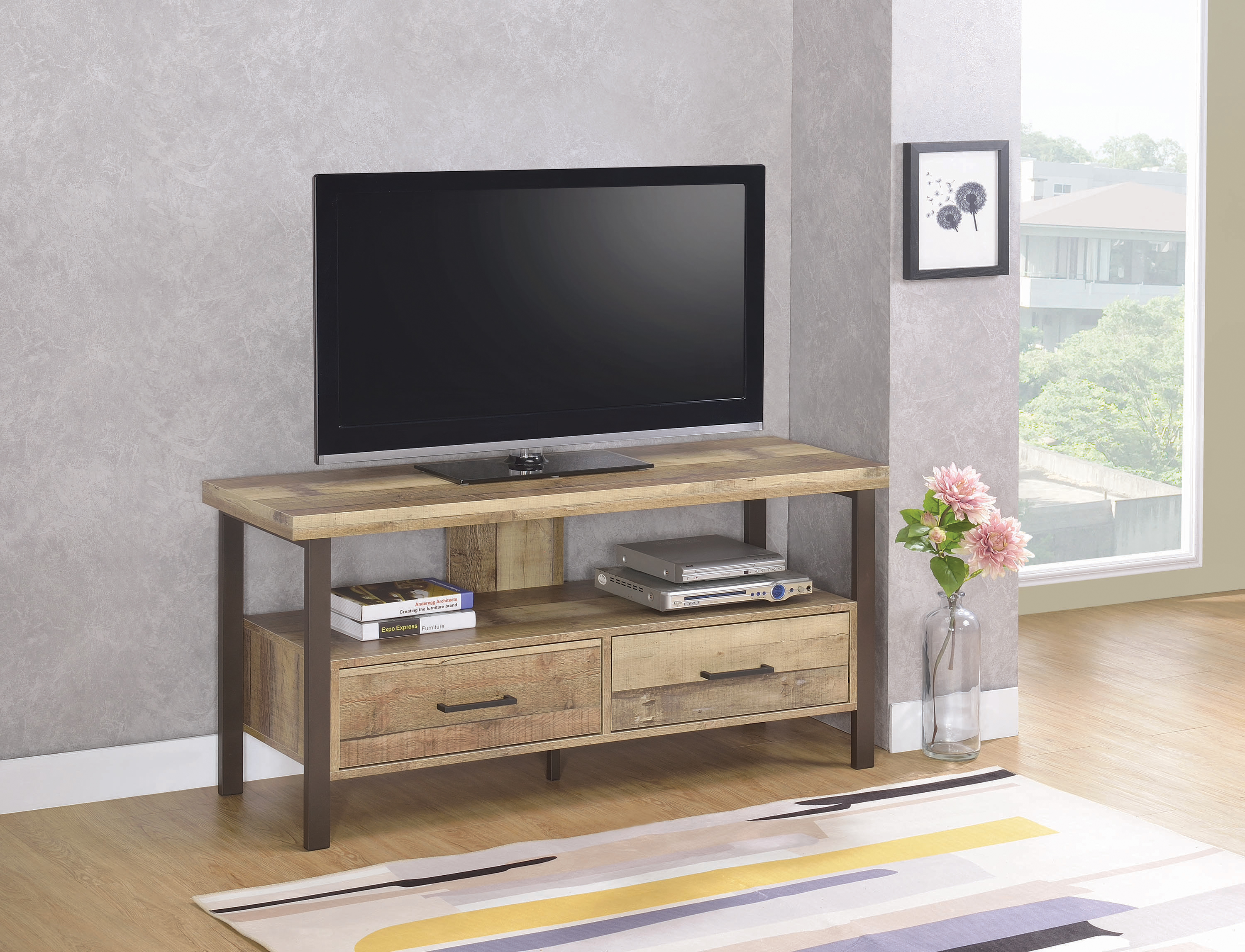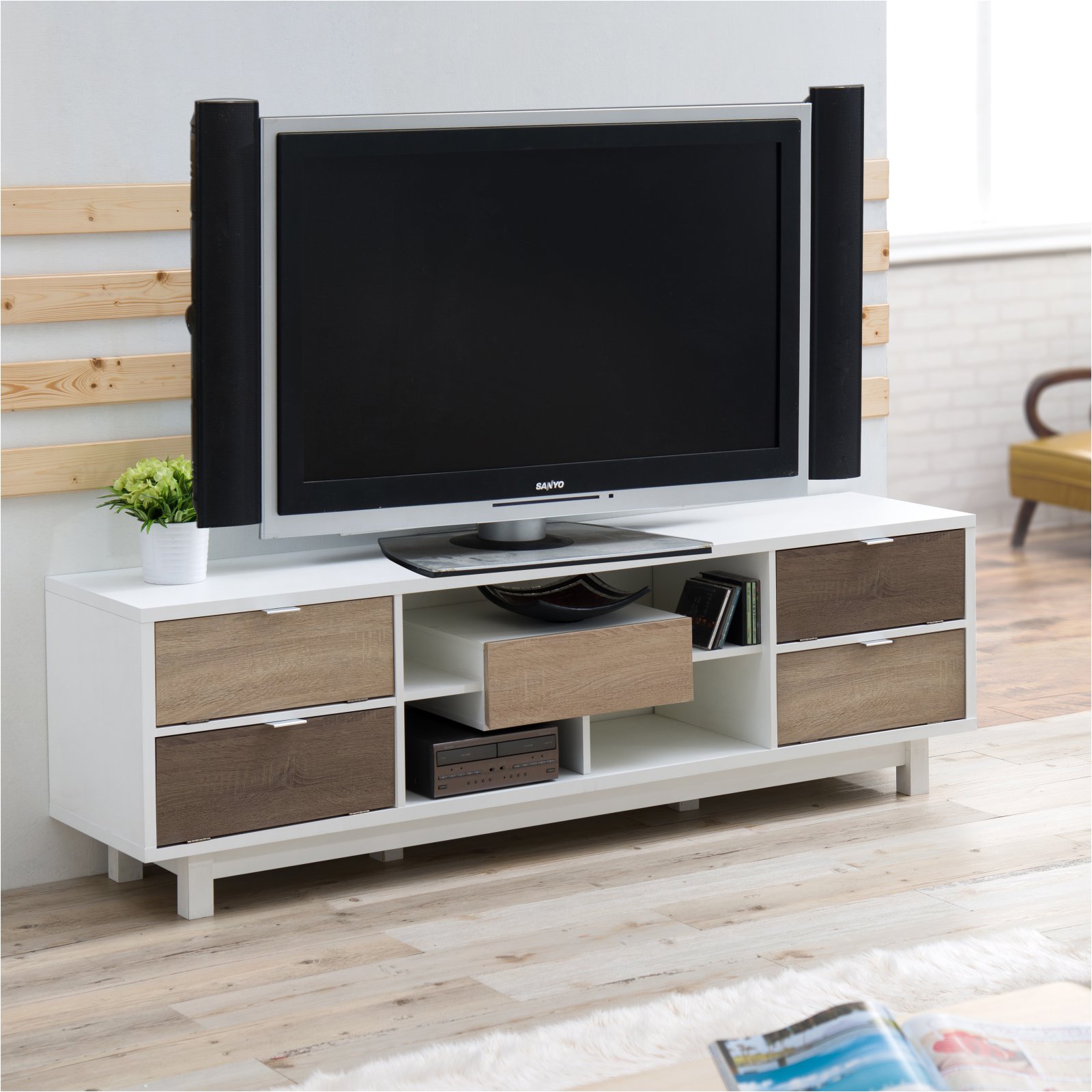Floating Cabinet Design and Functionality

Floating cabinets, a modern design element, offer a sleek and space-saving solution for TV placement. They provide a functional and visually appealing way to organize your entertainment space while enhancing the overall aesthetic of your room.
Types of Floating Cabinets
Floating cabinets come in various designs, each offering unique features and benefits. Here are some common types:
- Open Shelves: Open shelves offer a minimalist and airy look, allowing you to display decorative items, books, or media players. They provide easy access to your belongings and create a sense of openness.
- Closed Cabinets: Closed cabinets provide storage space for electronics, media, or other items you want to keep concealed. They offer a clean and clutter-free appearance, making them ideal for a minimalist aesthetic.
- Combination Styles: Combination styles combine open shelves and closed cabinets, offering a balanced approach to both display and storage. This type of cabinet allows you to showcase some items while keeping others hidden, creating a personalized look.
Advantages and Disadvantages of Using a Floating Cabinet
Floating cabinets offer numerous advantages, but they also come with some drawbacks. Understanding these aspects will help you determine if they are the right choice for your needs.
Advantages
- Space-Saving: Floating cabinets utilize wall space efficiently, creating a sense of spaciousness and minimizing floor clutter.
- Modern Aesthetic: Their sleek and minimalist design adds a modern touch to any room, complementing contemporary decor styles.
- Versatility: Floating cabinets are available in various sizes, shapes, and materials, allowing for customization to suit your needs and preferences.
- Easy Access: Open shelves provide easy access to items, making it convenient to retrieve or display items.
- Enhanced TV Viewing: Floating cabinets can elevate the TV, improving viewing angles and creating a more immersive experience.
Disadvantages
- Installation Complexity: Installing floating cabinets requires careful planning and may involve drilling into walls, which can be challenging for some homeowners.
- Limited Storage: Compared to traditional cabinets, floating cabinets may offer less storage space, especially for closed cabinets.
- Potential for Clutter: Open shelves can easily become cluttered if not organized effectively.
- Cost: Floating cabinets can be more expensive than traditional cabinets due to their specialized design and materials.
Innovative Floating Cabinet Designs
Modern designers are constantly pushing the boundaries of floating cabinet design, creating innovative solutions that enhance TV viewing and elevate the overall aesthetic.
- Integrated Lighting: Some floating cabinets incorporate LED lighting, providing ambient illumination and highlighting the TV and surrounding decor. This creates a warm and inviting atmosphere, perfect for movie nights or relaxing evenings.
- Floating Shelves with Built-in Soundbars: Some floating shelves feature integrated soundbars, eliminating the need for separate speakers and creating a sleek, streamlined look. This design also optimizes sound quality by positioning the soundbar at ear level.
- Floating Cabinets with Cable Management: Many floating cabinets come with built-in cable management systems, helping to keep cords and wires organized and concealed. This promotes a clutter-free and aesthetically pleasing look.
Selecting the Right Size and Style
Choosing the right size and style of floating cabinet is crucial for optimal functionality and aesthetics. Consider the following factors:
- TV Size: The cabinet should be proportionate to the TV size. A larger TV requires a wider and deeper cabinet to accommodate it comfortably.
- Room Decor: The cabinet style should complement the overall decor of the room. For a modern aesthetic, opt for sleek and minimalist designs. For a more traditional look, consider cabinets with ornate details.
- Storage Needs: Determine how much storage space you need. Open shelves offer less storage but provide easy access, while closed cabinets offer more storage but may require more organization.
Installation and Mounting Considerations

Installing a floating cabinet under your TV requires careful planning and execution to ensure a secure and aesthetically pleasing result. The success of your installation hinges on the strength of your walls and the appropriate mounting techniques. This section will guide you through the necessary steps, tools, and considerations for a successful installation.
Choosing the Right Mounting Method
The choice of mounting method depends on the weight of the cabinet, the type of wall, and the desired level of stability. Common mounting methods include wall anchors, toggle bolts, and specialized floating cabinet brackets.
- Wall Anchors: Wall anchors are suitable for lighter cabinets and walls made of drywall or plaster. They expand inside the wall cavity, providing a secure grip. However, they may not be strong enough for heavier cabinets or walls with limited depth.
- Toggle Bolts: Toggle bolts are ideal for heavier cabinets and walls with deeper cavities. They feature a spring-loaded toggle that expands when tightened, providing a secure anchor.
- Floating Cabinet Brackets: Specialized floating cabinet brackets are designed for specific cabinet types and offer a robust mounting solution. They often include pre-drilled holes and adjustable features for easy installation.
Tools and Materials
To install a floating cabinet, you’ll need the following tools and materials:
- Stud Finder: Essential for locating wall studs for maximum support.
- Level: Ensures the cabinet is perfectly horizontal.
- Drill: For creating pilot holes and installing anchors or bolts.
- Screwdriver: For attaching the cabinet to the mounting brackets.
- Measuring Tape: To determine the exact position of the cabinet.
- Pencil: For marking the wall for drilling and mounting.
- Floating Cabinet Brackets: The appropriate brackets for your cabinet and wall type.
- Screws: Matching the brackets and the cabinet material.
- Wall Anchors or Toggle Bolts: Depending on the mounting method chosen.
Step-by-Step Installation Guide
Follow these steps to install your floating cabinet:
- Determine the Cabinet Position: Use a measuring tape and level to determine the ideal location for your cabinet, considering the TV size and any existing wall features.
- Locate Wall Studs: Use a stud finder to identify wall studs for maximum support.
- Mark the Wall: Mark the wall with a pencil at the desired height and position for the cabinet.
- Install Mounting Brackets: Attach the floating cabinet brackets to the wall using screws, anchors, or toggle bolts, ensuring they are securely fixed to the studs.
- Attach the Cabinet: Carefully hang the cabinet onto the installed brackets, ensuring it is level and secure.
Concealing Wiring and Cables
A clean and organized look is crucial for a floating cabinet installation. Here are some tips for concealing wiring and cables:
- Utilize Wall Channels: Wall channels can be painted to match the wall color and offer a discreet way to route cables along the wall.
- Use Cable Ties: Securely bundle cables together using cable ties for a neater appearance.
- Consider a Cable Management Box: A cable management box can be mounted behind the cabinet to conceal cables and provide easy access for future connections.
Decorating and Styling the Floating Cabinet: Floating Cabinet Under Tv

The floating cabinet offers a unique opportunity to enhance your living space beyond just storage. With careful styling, it can transform into a focal point that reflects your personality and complements your overall décor.
Creating a Balanced Layout
A well-organized layout is key to achieving a visually appealing and functional floating cabinet. Consider dividing the space into zones:
- Electronics Zone: This area should accommodate your TV, sound system, and other electronics. Keep cords neatly organized with cable ties or organizers for a clean look.
- Decorative Zone: Showcase personal items like framed photos, artwork, sculptures, or decorative objects.
- Book Zone: Display books in an organized manner, perhaps by genre or color, to add visual interest and create a reading nook feel.
Personalizing with Accessories
Adding accessories is a great way to infuse your personality into the space.
- Plants: A small potted plant or succulent can add a touch of nature and life to the cabinet. Choose plants that thrive in indoor environments and complement the overall style.
- Lighting: Consider adding accent lighting to highlight specific items or create a cozy ambiance. String lights, LED strips, or table lamps can enhance the look.
- Vases and Bowls: Fill them with decorative elements like pebbles, shells, or dried flowers.
Creating a Cohesive Display, Floating cabinet under tv
A cohesive display is about creating a sense of harmony and unity.
- Color Palette: Choose a color scheme that complements your room’s décor. Stick to a limited number of colors and use them consistently in the accessories, books, and decorative items.
- Style: Maintain a consistent style throughout the display. For example, if you’re going for a minimalist look, avoid clutter and opt for clean lines and simple accessories.
- Balance: Achieve a balance between empty space and filled space. Avoid overcrowding the cabinet, and allow for breathing room between items.
Practical Uses
The floating cabinet can serve practical purposes beyond just displaying items.
- Media Storage: Store DVDs, Blu-rays, and gaming consoles in designated compartments or baskets.
- Showcasing Personal Items: Display family photos, travel souvenirs, or collectibles in a way that reflects your interests and personality.
Floating cabinet under tv – A floating cabinet beneath your television can be a stylish and functional addition to any living space. The sleek, minimalist design can complement a variety of décor styles, and the lack of legs creates an illusion of more space.
When considering a color for your cabinet, it’s worth exploring the current trends in home design. As discussed in are dark cabinets back in style , dark cabinets are making a strong comeback, adding a touch of sophistication and depth to any room.
A dark floating cabinet under your television can provide a striking visual contrast and create a focal point in your living area.
Floating cabinets under a television offer a modern and minimalist aesthetic, enhancing the visual appeal of any living space. While a variety of materials can be used, dark oak wood provides a timeless elegance, adding warmth and sophistication to the room.
For those seeking a classic and enduring design, exploring the options available for a dark oak tv cabinet can be a rewarding endeavor. The rich color and natural grain patterns of dark oak create a stunning contrast against a sleek, floating cabinet, adding depth and visual interest to the entertainment center.